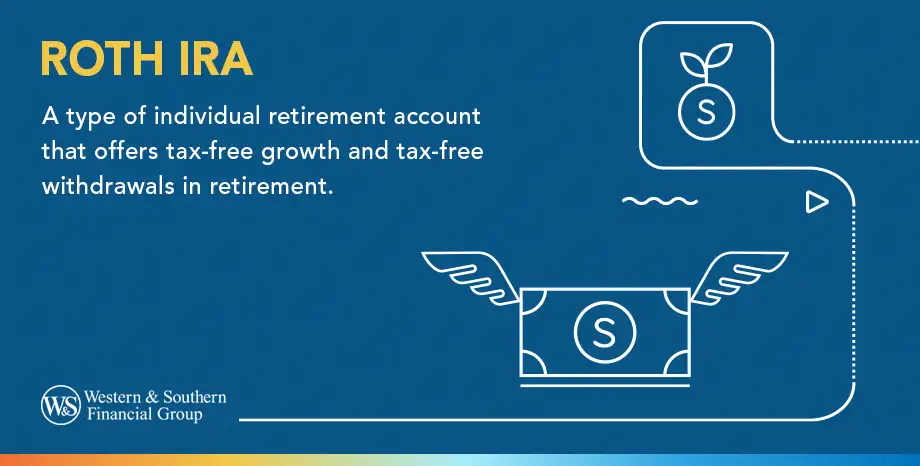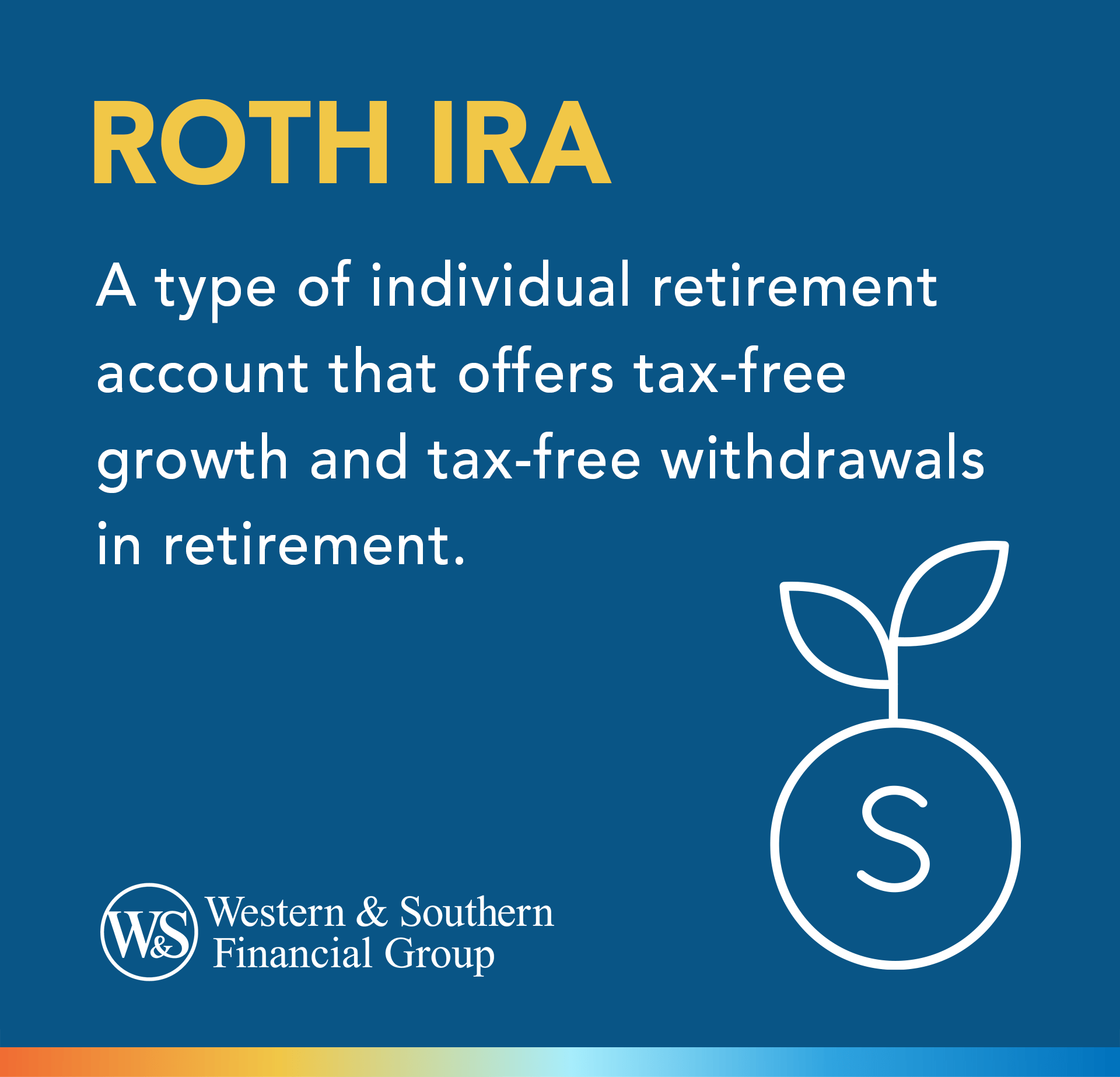

Key Takeaways
- A Roth IRA allows your investments to grow tax-free, and you won’t owe taxes on qualified withdrawals in retirement.
- You can contribute up to $7,500 per year (or $8,600 if you're 50 or older) regardless of your employer.
- Roth IRA contributions are limited by income, with phaseouts starting at $153,000 for single filers and $242,000 for married couples in 2026.
- You can withdraw your contributions anytime tax-free, but early withdrawals of earnings may face taxes and penalties.
- A Roth IRA may be a smart choice if you're younger or expect to be in a higher tax bracket during retirement.
In our fast-paced world, we tend to want everything right now. But delayed gratification is one of the secrets to success. The same logic applies to retirement planning with a Roth individual retirement account (IRA). While such an account doesn't give you an immediate tax benefit, it does come with potential savings later in life.
Roth IRA Defined
A Roth IRA is a type of retirement account that you can open at many financial services companies and add money to throughout the year. You can invest the savings in a variety of assets, including stocks, bonds, mutual funds and certificates of deposit (CDs). The types of investment options will vary depending on where you open the account.
How Much Can You Contribute to a Roth IRA?
There are annual Roth IRA contribution limits, according to the IRS:
- up to $7,500 per year if you're younger than age 50
- up to $8,600 per year if you're age 50 or older
A Roth IRA is not a workplace retirement plan, which means you don't need an employer to set up this account on your behalf.
What Are the Tax Benefits of a Roth IRA?
You don’t get a tax deduction when you contribute to a Roth IRA. Instead, the tax benefits come later.
With this account, your investment earnings grow tax-deferred. As long as you keep the money in the account, you won’t owe income taxes on your gains. In a regular, taxable investment account, you’d pay income taxes on gains each year, even if you reinvest them.
The real advantage shows up in retirement. Withdrawals from a Roth IRA are completely tax-free if you’re at least age 59½ and have had the account for five years. That means you’ll never owe income taxes on your investment gains. A Roth IRA is one of the rare ways to generate tax-free income in the U.S.
Who Can Contribute to a Roth IRA?
The government has Roth IRA income limits to determine who can use this type of account.1
| Filing Status | If MAGI IS LESS THAN |
Phase-out Range (MAGI) | Ineligible If MAGI is equal to or greater than |
|---|---|---|---|
| Single Filers |
$153,000 |
$153,000 – $168,000 |
$168,000 |
| Married Filing Jointly |
$242,000 |
$242,000 – $252,000 |
$252,000 |
When Can You Withdraw From a Roth IRA?
Since a Roth IRA is a retirement plan, you're supposed to keep your money in the account until you turn age 59 1/2, which is the official IRA retirement age. If you need to take money out before then, you do have options.
Contributions Tax-Free
If you want to take out your investment earnings, you could owe income tax and an additional 10 percent early withdrawal penalty on whatever you take out.
For example, if you have $150,000 in your Roth IRA ($100,000 in contributions and $50,000 in capital gains), you could take out $100,000 tax-free without any penalty. However, anything above that amount could be taxed and hit with the penalty.
Exceptions
While there is a penalty for taking money out before you turn age 59 1/2, there are a few exceptions to this if you use the money for:2
- College expenses
- Buy your first home
- Health insurance premiums when unemployed or became disabled
When Could a Roth IRA Make Sense?
A Roth IRA could make sense when you're younger. Since you have more time to grow your money, you'll likely earn more from your investments, which means you could earn more tax-free income.
The lower your tax bracket is now, the more a Roth IRA could also make sense. Other accounts, such as traditional IRAs or 401(k)s, give you an upfront tax deduction, but this is less valuable when you're in a lower tax bracket. You may benefit more from the tax-free income in retirement over the smaller tax deduction today.
Roth IRA could make sense if you think your tax bracket will increase when you retire. You're paying the taxes now versus later - when you'll potentially owe more. By considering this information, you can decide whether a Roth IRA might make sense for your retirement plan.
Conclusion
While a Roth IRA may require some patience upfront, its long-term tax advantages could help your retirement savings go further. If you qualify and your financial situation aligns, it may be worth considering as part of your overall retirement strategy.
Roth IRAs offer tax advantages and flexibility for retirement planning. Start Your Free Plan
Frequently Asked Questions
What is the 5-year rule for Roth IRAs?
What happens to a Roth IRA after death?
How often should you put money in a Roth IRA?
What is the best age to start a Roth IRA?
Sources
- 401(k) limit increases to $24,500 for 2026, IRA limit increases to $7,500. https://www.irs.gov/newsroom/401k-limit-increases-to-24500-for-2026-ira-limit-increases-to-7500.
- Retirement Topics - Exceptions to Tax on Early Distributions. https://www.irs.gov/retirement-plans/plan-participant-employee/retirement-topics-tax-on-early-distributions.





















